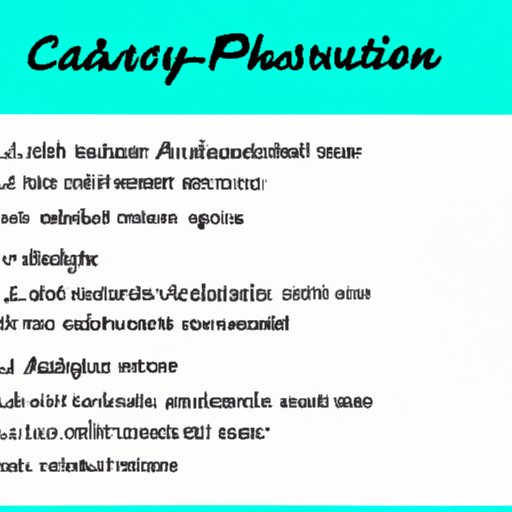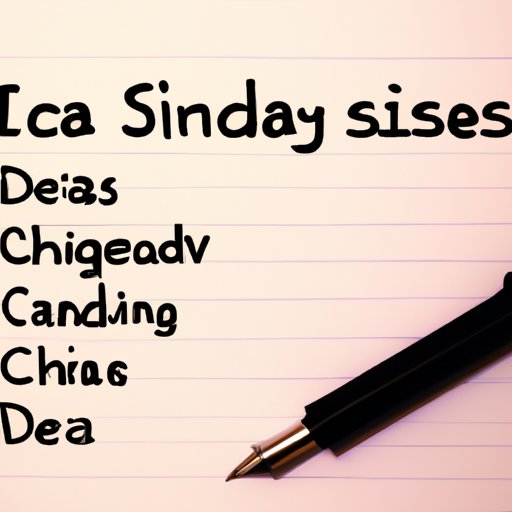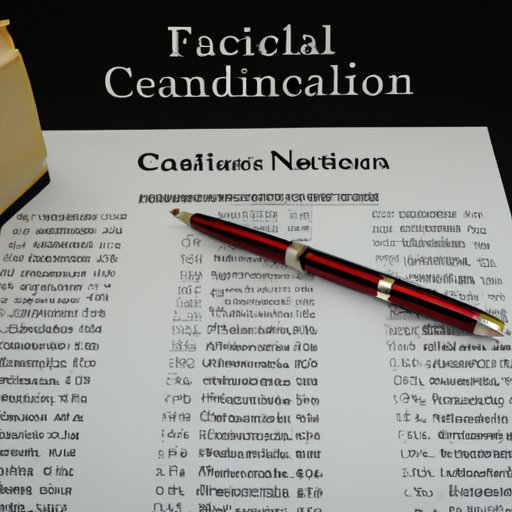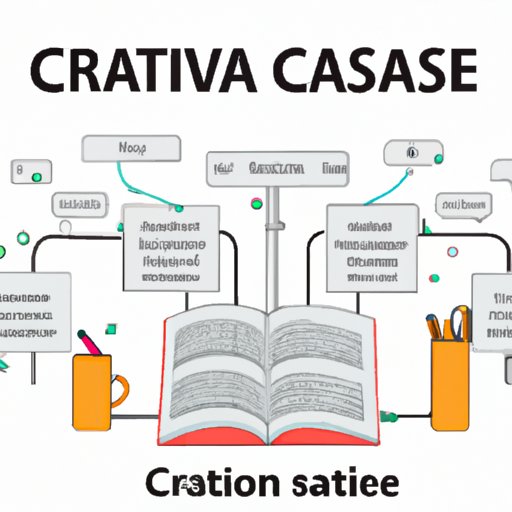Introduction
Classification writing is a type of writing that involves the categorization of ideas into distinct groups. Classification can be used in a variety of writing styles, from essays and reports to creative pieces. Understanding the basics of this type of writing can help writers organize their ideas in a more effective and efficient way. In this article, we’ll explore what classification writing is, its benefits, and different types of classification writing. We’ll also discuss how to craft effective classification essays and paragraphs.
Definition of Classification Writing
Classification writing is a type of writing that involves grouping a set of objects, ideas, or people into distinct categories based on shared characteristics. It is a common tool used to organize information and make it easier to understand. For example, if you were writing an essay about animals, you would classify them into different categories such as mammals, reptiles, amphibians, fish, etc. By doing this, you would be able to organize your ideas in a clear and concise manner.
Benefits of Classification Writing
Classification writing has several benefits. Firstly, it can help you organize your thoughts and make it easier to identify patterns and relationships between different ideas. Secondly, it can help you analyze a text more effectively by breaking it down into smaller sections. Lastly, it can help you organize your ideas into a logical structure that is easy to understand. As such, classification writing can be a useful tool for any writer.
Different Types of Classification Writing
There are several different types of classification writing, each with its own purpose and technique. Let’s take a look at some of the most common types of classification writing.
Classification Essay
A classification essay is a type of essay that requires the writer to group a set of objects, ideas, or people into distinct categories based on shared characteristics. The goal of this type of essay is to help the reader understand a particular topic by breaking it down into smaller sections. For example, if you were writing an essay about animals, you could categorize them into different groups such as mammals, reptiles, amphibians, fish, etc.
Classification in Creative Writing
Classification can also be used in creative writing. In this type of writing, the writer uses classification to create a vivid and engaging story. By grouping related ideas together, the writer can create a more interesting narrative and help the reader visualize the world they are describing. For example, if a writer was describing a forest, they could classify the trees into different groups such as evergreens, deciduous trees, and conifers.
Classification Paragraphs
Classification paragraphs are short pieces of writing that involve classifying a set of objects, ideas, or people into distinct categories based on shared characteristics. Unlike a classification essay, which typically consists of multiple paragraphs, a classification paragraph should be concise and focus on one particular category. For example, if you were writing about animals, you could write a classification paragraph about mammals.

How to Write a Classification Essay
Writing a classification essay can be challenging, but with the right approach, it can be done. Here are some tips for how to write a classification essay.
Understanding the Basics
Before you begin writing, it’s important to understand the basics of classification writing. Make sure you have a clear understanding of the topic and the categories you will be classifying. You should also determine the criteria for each category in order to ensure that your essay is organized and consistent.
Brainstorming Ideas
Once you have a good understanding of the topic and the categories you will be classifying, it’s time to brainstorm ideas. Think of examples and evidence that support each category. This will help you create an outline that is clear and organized.
Creating an Outline
Creating an outline is an important step in the writing process. Your outline should include the introduction, body, and conclusion of your essay. It should also include the categories you will be discussing and the evidence you will use to support each one.
Writing Your Essay
Now it’s time to start writing your essay. Begin with the introduction, which should provide an overview of the topic and the categories you will be discussing. The body of the essay should include the evidence you gathered during the brainstorming phase. Finally, the conclusion should summarize the main points of the essay.
Crafting Effective Classification Paragraphs
Writing effective classification paragraphs requires a few key steps. Here are some tips for crafting effective classification paragraphs.
Establishing a Topic Sentence
The first step in writing a classification paragraph is to establish a topic sentence. The topic sentence should introduce the category you will be discussing and provide a brief overview of the evidence you will use to support it.
Developing Supporting Details
Once you have established your topic sentence, the next step is to develop supporting details. This includes providing evidence to support your classification and explaining why the evidence supports the category. Be sure to keep your paragraphs concise and to the point.
Using Appropriate Language
When writing a classification paragraph, it’s important to use appropriate language. Avoid using slang or jargon, and be sure to use words that are precise and descriptive. This will help ensure that your paragraph is clear and understandable.

The Art of Classifying Ideas in Writing
Classification writing can be a powerful tool for organizing and analyzing information. It can help writers identify patterns and relationships between different ideas, analyze texts more effectively, and organize their ideas into a logical structure. To become a proficient classifier, writers must learn to identify patterns and relationships, analyze texts, and organize ideas.
Conclusion
Classification writing is a type of writing that involves categorizing a set of objects, ideas, or people into distinct categories based on shared characteristics. There are several different types of classification writing, including classification essays, classification in creative writing, and classification paragraphs. Additionally, there are specific steps and techniques for writing classification essays and crafting effective classification paragraphs. By understanding the basics of classification writing and practicing these techniques, writers can use this type of writing to organize and analyze their ideas more effectively.
Summary of Main Points
In this article, we discussed what classification writing is and its benefits. We explored different types of classification writing, including classification essays, classification in creative writing, and classification paragraphs. We also outlined tips for how to write a classification essay and craft effective classification paragraphs. Finally, we discussed the art of classifying ideas in writing and how it can help writers organize and analyze their ideas.

Final Thoughts on Classification Writing
Classification writing is a powerful tool for organizing and analyzing information. By understanding the basics of this type of writing and practicing the techniques outlined here, writers can use it to organize their ideas and make them easier to understand. Whether you’re writing an essay, report, or creative piece, classification writing can help you create a clear and organized structure for your ideas.
(Note: Is this article not meeting your expectations? Do you have knowledge or insights to share? Unlock new opportunities and expand your reach by joining our authors team. Click Registration to join us and share your expertise with our readers.)
